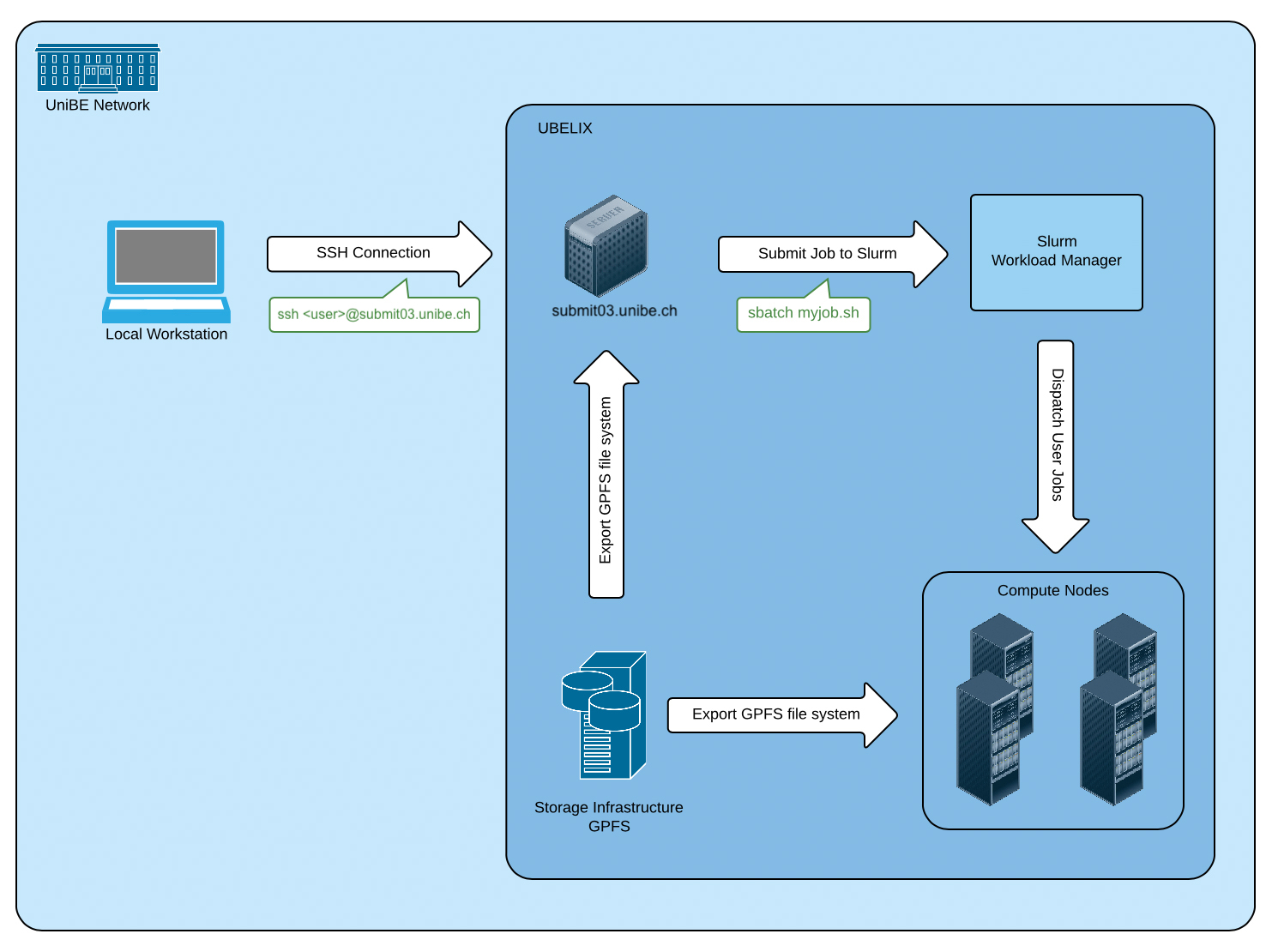UBELIX - Overview
Description
This page provides a high-level system overview of an HPC cluster such as UBELIX. It describes the different hardware components that constitute the cluster and gives a quantitative list of the different generations of compute nodes in UBELIX.
UBELIX (University of Bern Linux Cluster) is an HPC cluster that currently consists of about 320 compute nodes featuring ~12k CPU cores and 160 GPUs and a software-defined storage infrastructure providing ~3.5 PB of disk storage. UBELIX is a heterogeneous cluster, meaning UBELIX consists of different generations of compute nodes with different instruction sets. Compute nodes, front-end servers and the storage are interconnected through a high speed Infiniband network. The front-end servers also provide a link to the outside world. UBELIX is used by various institutes and research groups within all faculties at Unibe.
High-level system overview
 The HPCs can only be reached within the UniBE network. User landing point are
the login nodes, where jobs can be prepared and submitted. Computational tasks
are scheduled and managed on the compute nodes using SLURM, the workload
manager. All compute nodes as well as the login nodes have access to the
parallel file system.
The HPCs can only be reached within the UniBE network. User landing point are
the login nodes, where jobs can be prepared and submitted. Computational tasks
are scheduled and managed on the compute nodes using SLURM, the workload
manager. All compute nodes as well as the login nodes have access to the
parallel file system.
SLURM Batch-Queueing System
On UBELIX we use the open-source batch-queueing system Slurm, managing all jobs on the compute nodes. The job submission is described in detail in the Job handling section, starting with Submitting jobs.
Cluster Partitions (Queues) and their Compute Nodes
UBELIX is a heterogeneous machine, consisting of different architectures. There are CPU compute nodes with:
- Intel Broadwell (20 cores per node; usage of full or multiple nodes)
- AMD Epyc2 (128 cores per node)
and GPU nodes with:
- Nvidia Geforce GTX 1080 Ti
- Nvidia Geforce RTX 3090
- Nvidia Tesla P100
- Nvidia A100
Partitions group nodes into logical sets, which share the same limits. Furthermore, specific limits and privileges are managed using Quality Of Service (QOS), like high priorities or node limitations for long running jobs.
Different partitions and QOS are listed in the SLURM Partition/QOS article.
Storage Infrastructure
A modular, software-defined storage system (IBM Spectrum Scale) provides a shared, parallel file system that is mounted on all frontend servers and compute nodes. For more information see storage infrastructure and File System Quota.